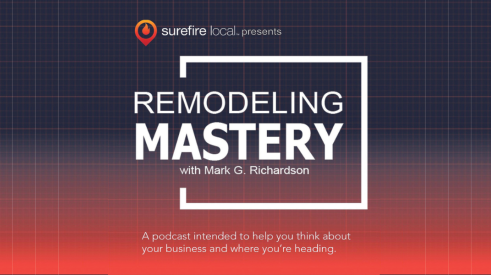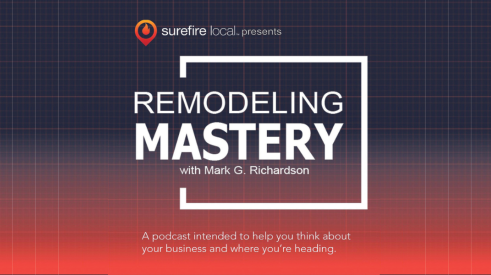Have you ever asked yourself why do we have to handle and overcome objections? Or why doesn’t the prospect just come out and tell us what we have to do to get the order?
The answer is the prospect is going through a natural buying process, and what we are dealing with is an excuse, procrastination, fear of making the wrong decision, or an aversion to being sold.
It’s similar to entering a retail store interested in buying a specific item and, when approached by a salesperson who says, “May I help you?” You respond with ... “Just looking!” Why didn’t you tell the sales person what you wanted to buy? For the same reasons mentioned above, most likely.
Being in sales requires that you anticipate excuses and objections and not let statements like the one above discourage you. Embrace them instead. Remind yourself that it’s normal for customers or prospects to procrastinate or state excuses before buying.
So what is the difference between an excuse and an objection? Statements like “think about,” “shop around,” or “get other prices” are excuses. Statements like “too much money” and “can’t afford now” are objections. A sale is made when we overcome objections.
So your job is to convert procrastination and excuses into objections so you have an opportunity to overcome them and close the sale. When excuses and objections are handled correctly, prospects will tell you what needs to be done to earn their business.
Your job is to move the prospect through the natural buying process of procrastination. Think, shop, and sleep to objections such as too much money and to customer questions such as, “What do you think honey?” and “What do we do next?” so that they eventually lead to a sale.
In the Dave Yoho Associates best-selling audio, “The Science of Successful In-Home Selling,” we cover this process in great detail. It all starts with understanding what causes an objection then having a system to deal with it.
Handling objections with S.A.L.E.S.
A price objection is a statement by prospects that they need to know more before buying. In “The Science of Successful In-Home Selling” we say price objections are a sign of interest.
However, an objection doesn’t usually come out sounding like a polite request for additional information. The moment the prospect voices an objection, they are usually sincere and will delay purchasing or decide not to purchase until that objection is resolved.
Unfortunately, price objections are the most misunderstood statements made by prospects. Average sales people view price objections as obstacles to a sale and believe what the customer is saying instead of accepting responsibility for the end result, which is why they are average. Whereas the pro sees an objection as the pathway to the sale and typically sells more than their counterparts. There is a saying in our industry: “A customer will continue to shop around until they meet a salesperson.”
Handling objections will be made easier or more difficult depending on how well you’ve convinced your customer of the following:
- Your confidence in what you are presenting and your control of the sales process.
- Your knowledge of your industry, company, and products. Your preparation demonstrated by a professional presentation.
- Their need and desire for your product defined by the quality of your presentation.
- Your ability to listen to their needs, wants, and desires while demonstrating empathy and understanding.
Successfully dealing with these issues is accomplished by completing a presentation that’s based on the customer’s values and needs ... not yours. It requires that a presentation includes a sequence or method for delivering the price.
Remember this power statement: Closing the sale is the natural conclusion to the successful completion of each step of the selling methodology; or simply, your best close is a great presentation. The number one reason people decide to buy one thing over another is the salesperson and the number one reason a salesperson does not get the order is because he or she did not ask for it.
That’s why your confidence, knowledge, and ability to maintain rapport during the close is so critical. Leave any of these components out, and the close will become more difficult or has the potential to be perceived as “high pressure.”
The customer will feel like they are being “sold” instead of being put in a position to “buy.” If you deal with objections by using a planned system, you increase your chances of selling more (or at least one more) contracts than you currently sell.
The S.A.L.E.S. closing system is designed to put a salesperson in a position to sell the “one more” contract. S.A.L.E.S. is an acronym that stands for Silence, Affirm, Layer, Eliminate, and Solve. The system, when followed, moves customers through their natural buying process. It prevents arguments, reduces confrontations, and puts the customer in a position to buy what you are selling. Review the following then use it as a guide to increase sales.
SILENCE
The first step in handling your prospects’ objections is to remain silent or pause for four to six seconds after they state an excuse or objection. By remaining silent for four to six seconds, it gives you time to think about what you just heard and, most importantly, customers might just start talking again and solve their objection. Again, pausing for four to six seconds and being quiet may be all you need to close the sale.
AFFIRM
After you have paused for four to six seconds, affirm the prospect by saying, “I understand,” or “I appreciate your concerns.” Usually at the point of price delivery the tension is at its highest peak. Affirmation is disarming to your prospect because most customers are expecting an argument or a defensive rebuttal. By pausing, listening, and affirming your customers you put yourself in the place of your prospect (empathy) and communicate that you understand the meaning of the prospect’s objection.
LAYER
Asking “Why is that?” or “Why do you feel that way?” provides another layer of information. This layer is most likely the real objection or close to it.
ELIMINATE
Once they have given you the next layer, isolate that objection and eliminate it to avoid another similar objection being raised by asking, “Other than that is there anything else standing in the way of you owning and enjoying this product?”
SOLVE
This is where it is up to you to deal with what they said—money, timing, deposit. There is rarely an objection of any kind that can’t be overcome by the S.A.L.E.S. closing system.
Understanding objections—particularly price objections—and having a system to isolate what is truly standing in the way of the prospect buying will put you in a better position to sell the “one more” you’re not getting. PR
--
Brian Smith is a senior account executive with Dave Yoho Associates in Fairfax, Va., www.daveyoho.com. His client base consists of large- and medium-sized companies who manufacture, distribute, and sell retail home improvement projects to consumers. He is a popular speaker at industry functions and is featured on the bestselling CD, “The Science of Successful In-Home Selling,” and regularly conducts seminars and management training meetings. He also appears on the Web-based sales training program entitled, Super Sales Training, www.supersalestraining.com.
Develop a system to isolate what is in the way of the prospect buying.
Add new comment
Related Stories
How to Get More Leads with a Stronger Remodeling Brand
Discover how to build a strong brand for your construction company, and learn key strategies to differentiate and attract better leads
How to Increase Your Odds of Closing Remodeling Sales
Use these tips to hone your sales process and grow close ratio
Building A Small Projects Division from the Ground Up
Through hard work and careful strategy, Harth Home Services has seen big growth
A Mindset of Serving Others
A research study shows surprising results about what makes us take ownership of our work.
10 Questions to Identify Sales Weaknesses
Mark Richardson runs you through a proper fitness check-up—for you and your sales team, that is.
How to Communicate with Today's Cautious Remodeling Client
Amid economic skepticism, Americans continue to spend. Now, how can you get them to spend on remodeling?
7 Tips to Lower Remodeling Costs
As material and labor prices spiral out of control, many homeowners are putting the brakes on remodeling projects. Use these guidelines to bring down costs.
How to Ease Client Fears and Take Control of the Remodeling Process
Industry advisor Mark Richardson offers seven ways to control your client's fantasy of remodeling and, ultimately, minimize their fears and enhance their understanding
3 Things I Learned from a Day with Normandy Remodeling
How Normandy uses numbers to motivate and the power of their showrooms
Today’s Consumer is Your Biggest Competitor
Understanding the real competitor allows you to sharpen the correct skills













